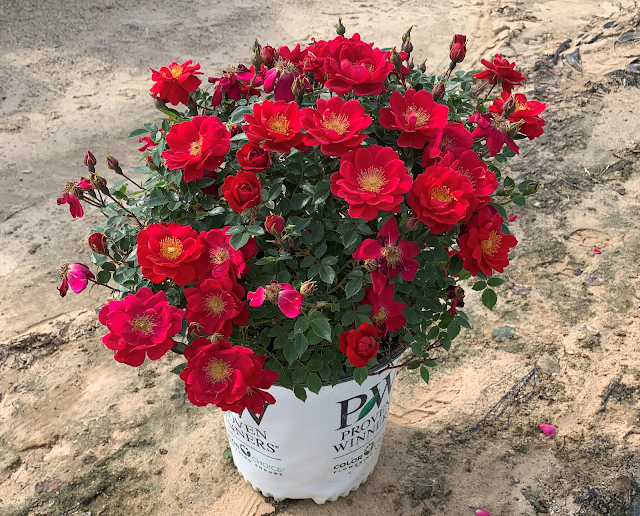
Some of you may have read one of my older posts on plant hunting in Korea. It was one of my greatest adventures and it explains how I met Dr. Shim. Well Dr. Shim just spent three days with me at Spring Meadow Nursery. He came to see some of his new Hibiscus syriacus selections that we are evaluating for potential introduction. Dr. Shim developed Lil’ Kim Hibiscus – the first dwarf rose of Sharon. This is a great little shrub that unfortunately is still hard to find. If you can find it give it a try!

I like to call Dr. Shim the Mike Dirr or Korea. For roughly 30 years he was the Professor of Ornamental Horticulture at Sungkyunkwan University, in Suwan just outside of Seoul. Just like Dr. Dirr, Dr. Shim has roots at the University of Illinois. This is where he got his Ph.D., and where spent a year as a visiting professor. He is now retired and spends his time golfing and breeding Hibiscus, Forsythia and Korean Tiger Lilies.
Dr. Shim got into horticulture as a young boy. His family owned a pear orchard. He told me that one of his first jobs was bagging pears. In Korea, pear growers bag the fruit while still on the tree to protect them from insects and disease. Ten women would make bags out of old news papers and each tree would require up to 500 bags. You can image it took a good deal of time to bag every pear in the orchard yet this did not dissuade Dr. Shim from continuing on in horticulture. He went on to study post harvest physiology, just as I had. After working for three and a half years on his Ph.D. in Champaign we retuned home to teach pomology in Korea. In time, his position was changed to ornamental horticulture. The rest is history.
While traveling, looking for new plant is great fun; it’s also a pleasure when breeders come to visit me. We spent two days touring the nursery, looking over new plants, scouting the seed beds for treasures and most importantly evaluating his 20 or so cultivars we have under evaluation. I’m happy to report there are many fine plants and I suspect a few will make it to market in the coming years. The hard part will be narrowing the plants down to the best three or four cultivars. His dwarf Hibiscus selections look great and have the potential to widen the Lil’ Kim line with a broader color range.
Dr. Shim got into horticulture as a young boy. His family owned a pear orchard. He told me that one of his first jobs was bagging pears. In Korea, pear growers bag the fruit while still on the tree to protect them from insects and disease. Ten women would make bags out of old news papers and each tree would require up to 500 bags. You can image it took a good deal of time to bag every pear in the orchard yet this did not dissuade Dr. Shim from continuing on in horticulture. He went on to study post harvest physiology, just as I had. After working for three and a half years on his Ph.D. in Champaign we retuned home to teach pomology in Korea. In time, his position was changed to ornamental horticulture. The rest is history.
While traveling, looking for new plant is great fun; it’s also a pleasure when breeders come to visit me. We spent two days touring the nursery, looking over new plants, scouting the seed beds for treasures and most importantly evaluating his 20 or so cultivars we have under evaluation. I’m happy to report there are many fine plants and I suspect a few will make it to market in the coming years. The hard part will be narrowing the plants down to the best three or four cultivars. His dwarf Hibiscus selections look great and have the potential to widen the Lil’ Kim line with a broader color range.
As I’ve said before I have a great job. I get to see really cool plants long before anyone can buy them. But the best part of my job is meeting the special people that develop these plants. Dr. Shim is more than just a special plant breeder. He' is a special friend.

 This is a greenhouse bench filled with Lo & Behold
This is a greenhouse bench filled with Lo & Behold 





 Pretty Much Picasso petunia
Pretty Much Picasso petunia 




















 I’ve visited Szczepan in Poland a few years ago and fortunately for me the Lonicera vines were in full bloom. Oh how I love fragrant plants.
I’ve visited Szczepan in Poland a few years ago and fortunately for me the Lonicera vines were in full bloom. Oh how I love fragrant plants.
